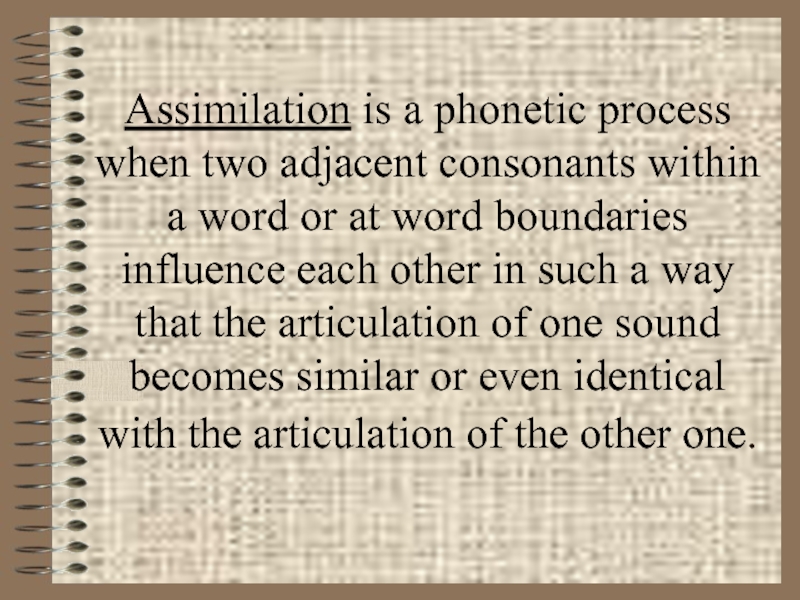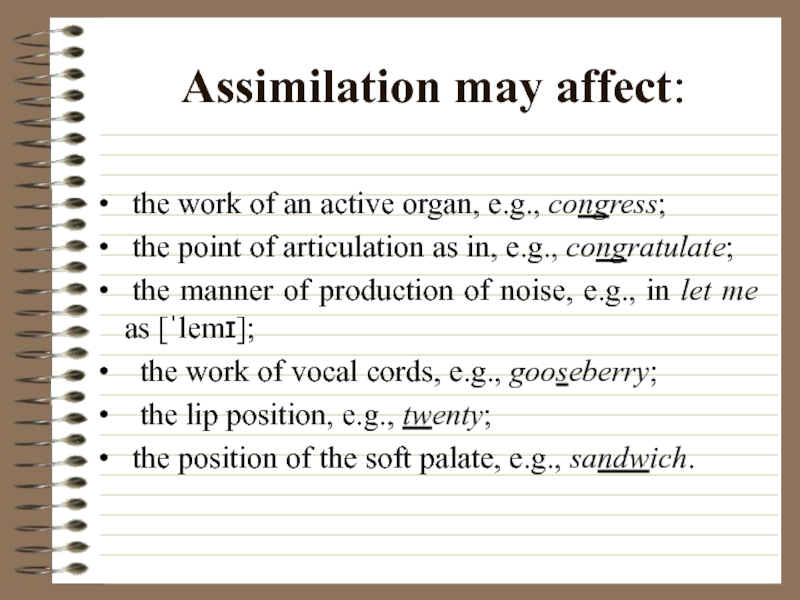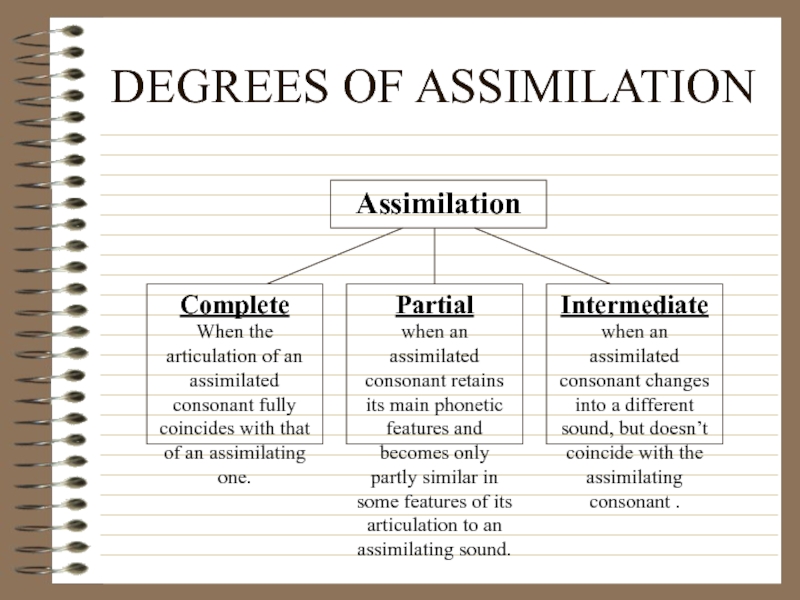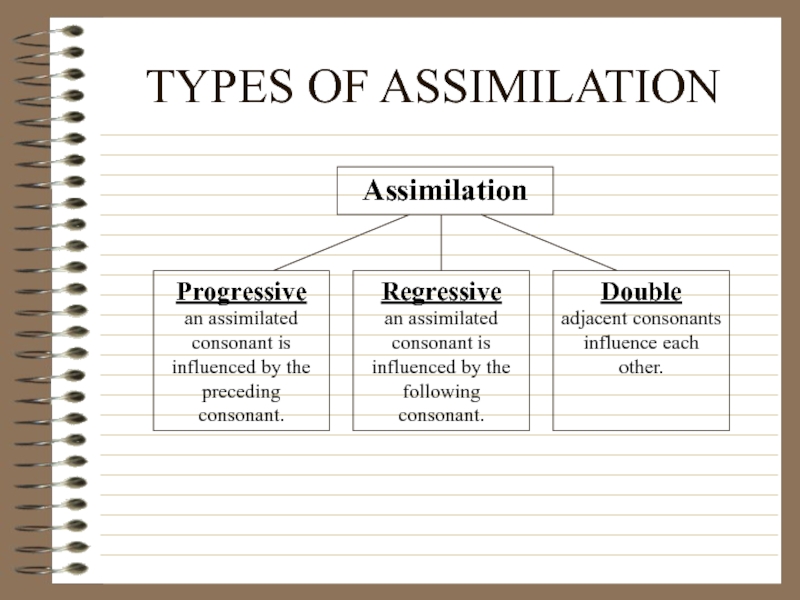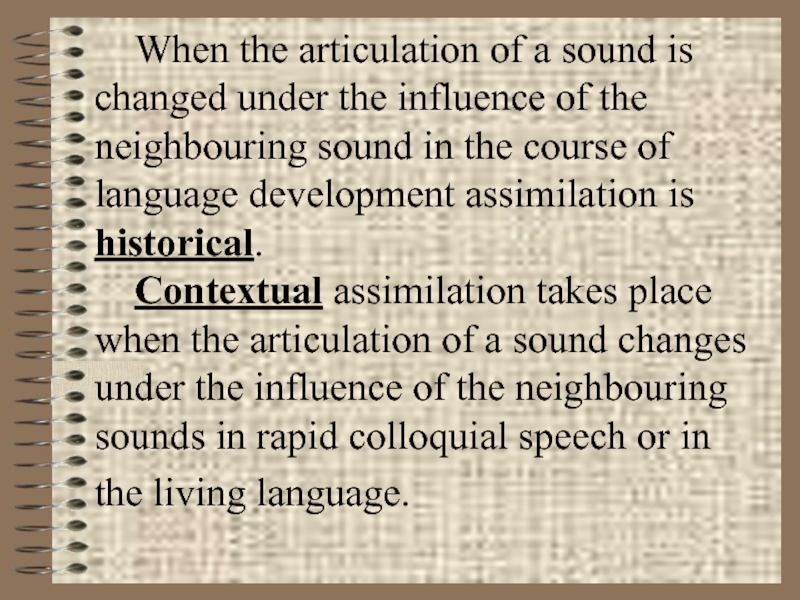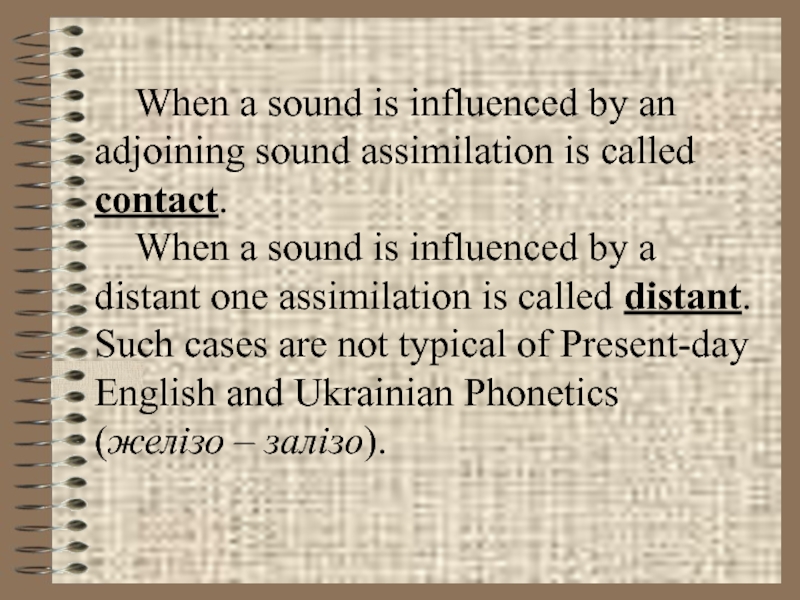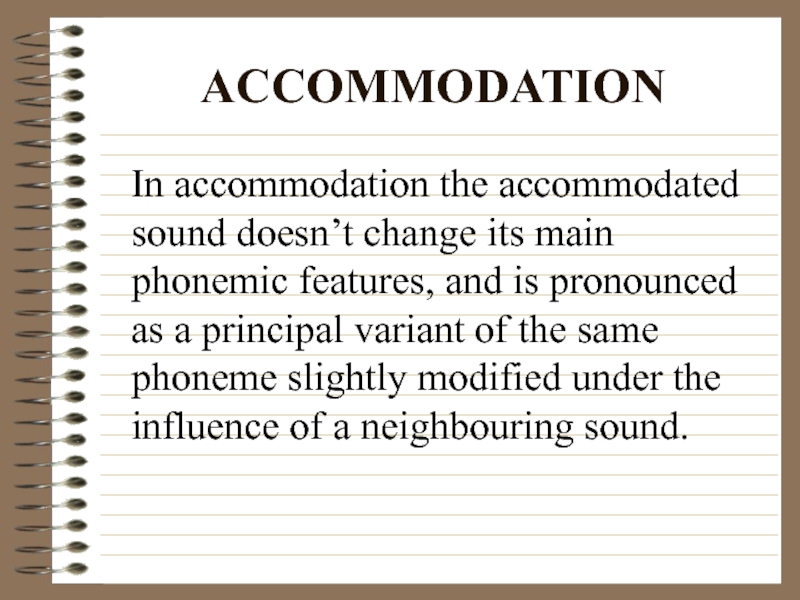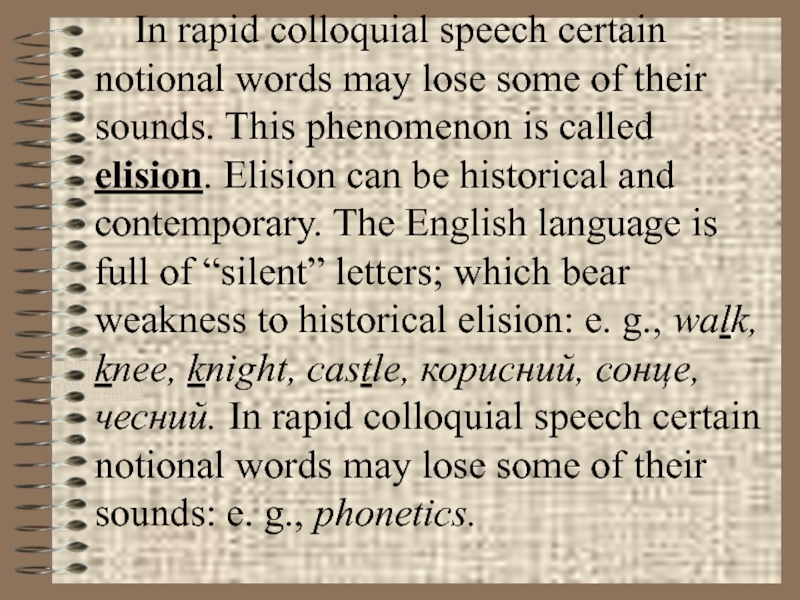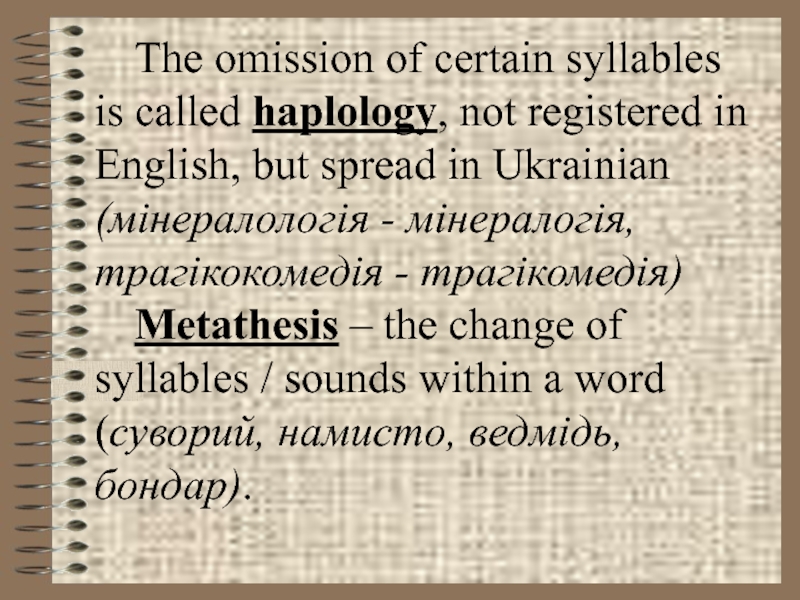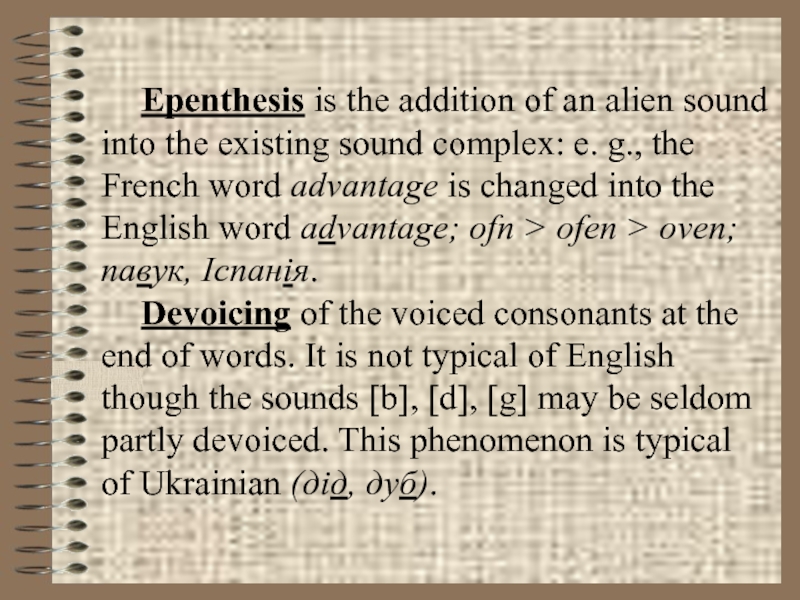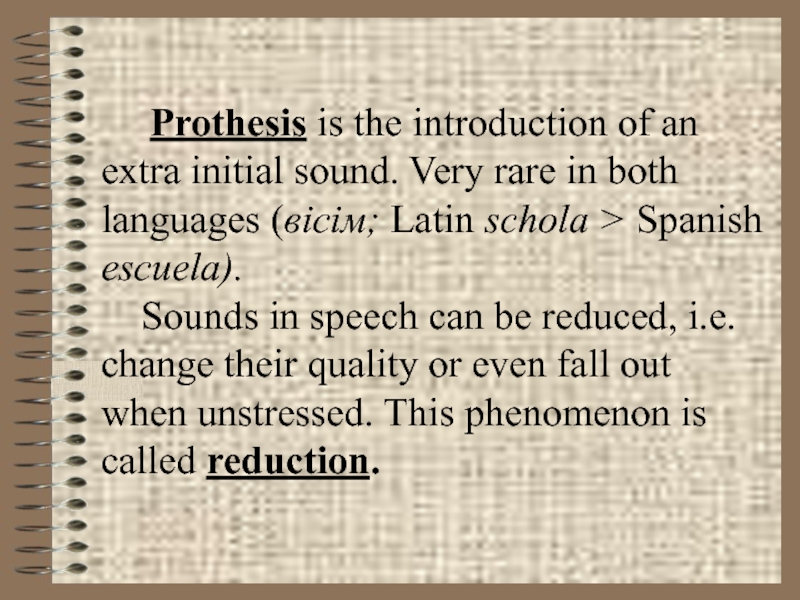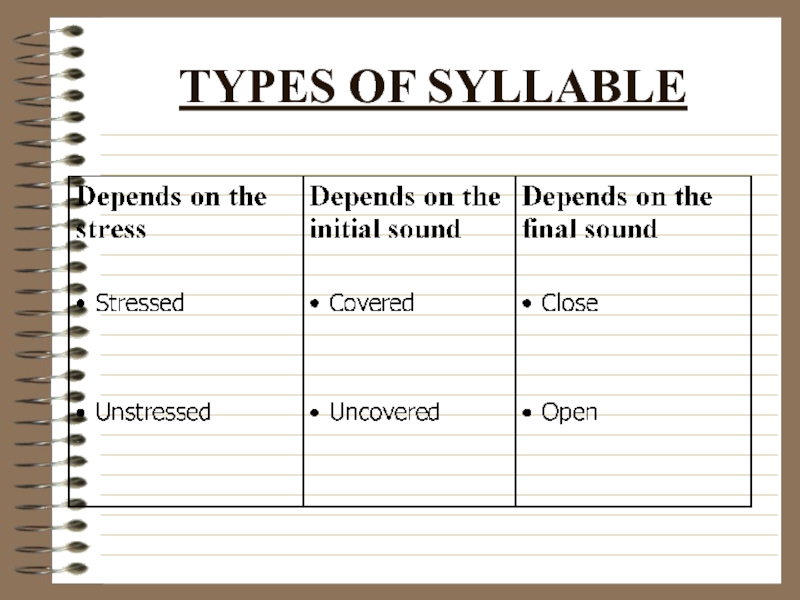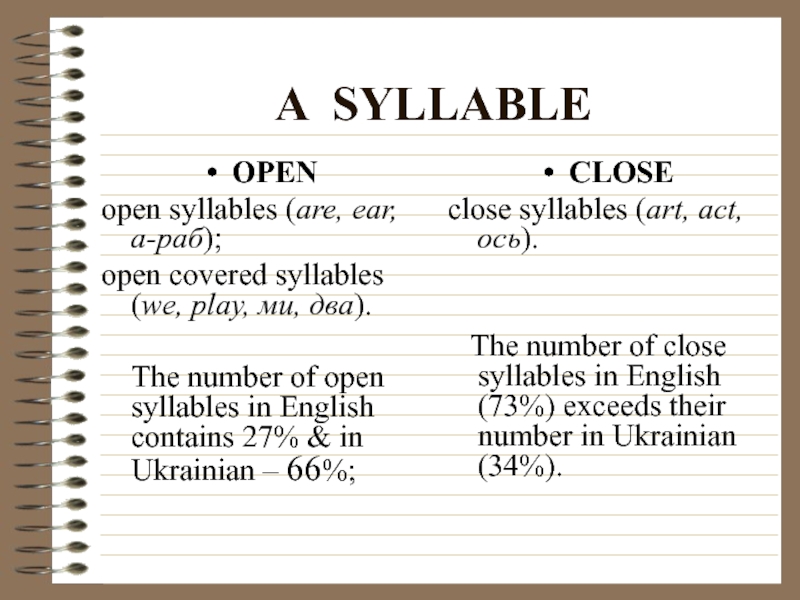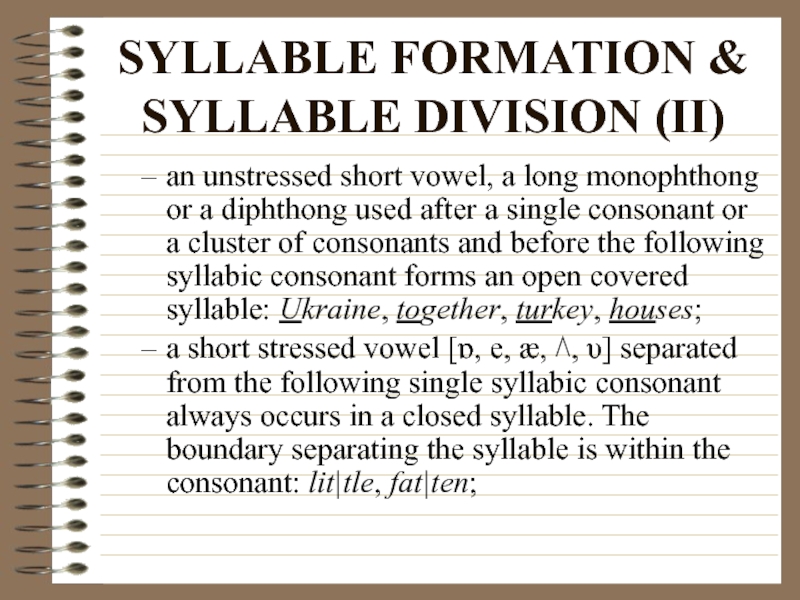- Главная
- Разное
- Дизайн
- Бизнес и предпринимательство
- Аналитика
- Образование
- Развлечения
- Красота и здоровье
- Финансы
- Государство
- Путешествия
- Спорт
- Недвижимость
- Армия
- Графика
- Культурология
- Еда и кулинария
- Лингвистика
- Английский язык
- Астрономия
- Алгебра
- Биология
- География
- Детские презентации
- Информатика
- История
- Литература
- Маркетинг
- Математика
- Медицина
- Менеджмент
- Музыка
- МХК
- Немецкий язык
- ОБЖ
- Обществознание
- Окружающий мир
- Педагогика
- Русский язык
- Технология
- Физика
- Философия
- Химия
- Шаблоны, картинки для презентаций
- Экология
- Экономика
- Юриспруденция
Assimilation is a phonetic process презентация
Содержание
- 1. Assimilation is a phonetic process
- 2. Assimilation may affect: the work of an
- 3. DEGREES OF ASSIMILATION
- 4. TYPES OF ASSIMILATION
- 5. When the articulation of a sound is
- 6. When a sound is influenced by an
- 7. ACCOMMODATION In accommodation the accommodated
- 8. In rapid colloquial speech certain notional words
- 9. The omission of certain syllables is called
- 10. The phenomenon opposite to assimilation in which
- 11. Epenthesis is the addition of an alien
- 12. Prothesis is the introduction of an
- 13. TYPES OF REDUCTION ZERO the omission of a vowel or a consonant.
- 14. TYPES OF SYLLABLE
- 15. A SYLLABLE OPEN open syllables (are, ear,
- 16. SYLLABLE FORMATION & SYLLABLE DIVISION (I) an
- 17. SYLLABLE FORMATION & SYLLABLE DIVISION (II) an
Слайд 1Assimilation is a phonetic process when two adjacent consonants within a
Слайд 2Assimilation may affect:
the work of an active organ, e.g., congress;
the point
the manner of production of noise, e.g., in let me as [ˈlemɪ];
the work of vocal cords, e.g., gooseberry;
the lip position, e.g., twenty;
the position of the soft palate, e.g., sandwich.
Слайд 5 When the articulation of a sound is changed under the influence
Слайд 6 When a sound is influenced by an adjoining sound assimilation is
Слайд 7ACCOMMODATION
In accommodation the accommodated sound doesn’t change its main
Слайд 8 In rapid colloquial speech certain notional words may lose some of
Слайд 9 The omission of certain syllables is called haplology, not registered in
Слайд 10 The phenomenon opposite to assimilation in which one of two similar
Слайд 11 Epenthesis is the addition of an alien sound into the existing
Слайд 12 Prothesis is the introduction of an extra initial sound. Very
Слайд 15A SYLLABLE
OPEN
open syllables (are, ear, а-раб);
open covered syllables (we, play, ми,
The number of open syllables in English contains 27% & in Ukrainian – 66%;
CLOSE
close syllables (art, act, ось).
The number of close syllables in English (73%) exceeds their number in Ukrainian (34%).
Слайд 16SYLLABLE FORMATION & SYLLABLE DIVISION (I)
an unstressed short vowel, a long
when 2 vowels are separated from each other by a cluster of consonant sounds the syllable boundary lies before the consonants: agree, asleep. It isn’t so in Ukrainian: ін-ші, ох-кав;
Слайд 17SYLLABLE FORMATION & SYLLABLE DIVISION (II)
an unstressed short vowel, a long
a short stressed vowel [ɒ, e, æ, ⋀, υ] separated from the following single syllabic consonant always occurs in a closed syllable. The boundary separating the syllable is within the consonant: lit|tle, fat|ten;
